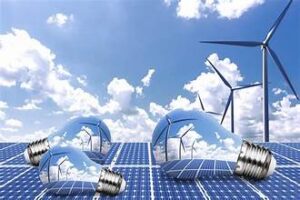
In a world increasingly aware of the environmental impacts of traditional energy sources, the shift towards sustainable energy solutions is more critical than ever. This article explores the latest trends and innovations in sustainable energy, highlighting how these advancements are paving the way for a greener future.
1. The Rise of Renewable Energy Sources
Solar Power
Solar energy continues to be at the forefront of sustainable energy solutions. Recent advancements in photovoltaic technology have led to more efficient and affordable solar panels. Innovations like bifacial panels, which capture sunlight from both sides, and integrated solar roofing systems are enhancing the effectiveness of solar power. Additionally, improved energy storage solutions, such as high-capacity batteries, are addressing the intermittency issue associated with solar energy.
Wind Energy
Wind power is another major player in the renewable energy sector. The development of larger and more efficient wind turbines has increased energy output and reduced costs. Floating wind turbines are a recent innovation that allows for the deployment of wind farms in deeper waters where wind speeds are higher. This technology expands the potential locations for wind farms, making wind energy a more versatile and scalable option.
Hydropower
Hydropower has long been a reliable source of renewable energy. New innovations in hydropower technology focus on minimizing environmental impact and enhancing efficiency. For example, small modular hydropower systems are being developed to provide sustainable energy to remote areas without the need for large dams. Additionally, advancements in hydrokinetic technology harness the energy of flowing water without significant infrastructure changes.
2. Advances in Energy Storage and Management
Battery Technologies
Energy storage is crucial for the stability and reliability of renewable energy sources. Recent developments in battery technology, such as solid-state batteries and flow batteries, offer higher energy densities and longer lifespans compared to traditional lithium-ion batteries. These innovations are crucial for balancing supply and demand, particularly in renewable energy systems where production can be variable.
Smart Grids
The integration of smart grid technology is transforming the way energy is distributed and managed. Smart grids use advanced sensors, communication technologies, and data analytics to optimize energy distribution and reduce wastage. They enable real-time monitoring and control of energy flows, which enhances grid reliability and efficiency. Moreover, smart grids facilitate the integration of various renewable energy sources, contributing to a more resilient and flexible energy system.
3. Emerging Technologies in Sustainable Energy
Hydrogen Fuel Cells
Hydrogen fuel cells are gaining traction as a clean energy solution, especially in transportation. Unlike traditional combustion engines, hydrogen fuel cells produce only water as a byproduct, making them an environmentally friendly alternative. Innovations in hydrogen production, such as green hydrogen generated from renewable sources, are improving the feasibility and sustainability of this technology.
Geothermal Energy
Geothermal energy harnesses the heat from the Earth’s core to generate electricity and provide heating. Recent advancements in geothermal technology, such as enhanced geothermal systems (EGS), have increased the potential for geothermal energy production. EGS can tap into deeper and less permeable geothermal resources, expanding the geographical reach of geothermal energy.
Bioenergy
Bioenergy, derived from organic materials, is another promising sustainable energy solution. Innovations in bioenergy include the development of advanced biofuels and biogas technologies. These advancements aim to improve the efficiency and sustainability of bioenergy production while reducing competition with food resources.
4. The Role of Policy and Innovation in Driving Change
Government Initiatives
Government policies and incentives play a significant role in promoting sustainable energy solutions. Programs such as renewable energy subsidies, tax credits, and emissions reduction targets drive investments in clean energy technologies. Additionally, international agreements and climate action plans support global efforts to transition to sustainable energy.
Private Sector Investments
Private sector investments in sustainable energy research and development are crucial for accelerating technological advancements. Collaborations between businesses, research institutions, and governments foster innovation and bring new technologies to market. Startups and established companies alike are investing in cutting-edge technologies and business models that drive the growth of the sustainable energy sector.
Conclusion
The transition to sustainable energy solutions is essential for addressing the global challenge of climate change and environmental degradation. Trends and innovations in renewable energy sources, energy storage, emerging technologies, and supportive policies are paving the way for a greener and more sustainable future. As we continue to invest in and develop these solutions, we move closer to achieving a cleaner and more resilient energy system.



